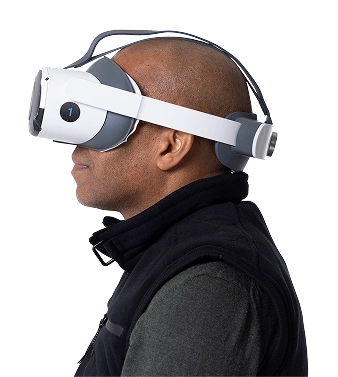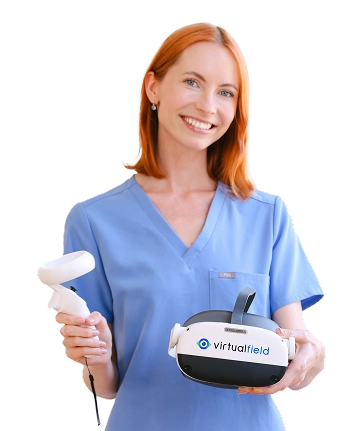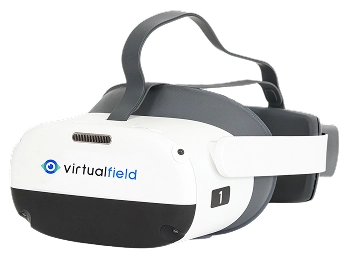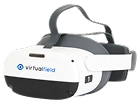In just seconds, you can use the cover test to measure strabismus in patients of every age. Even without equipment, you can detect misalignment and inform a treatment plan. Although the technique is straightforward, accurate interpretation takes skill, especially when eye movements are subtle or you’re working with very young patients. The cover test for eyes is not a complete exam in and of itself, but it is a beneficial assessment. This guide explores the uses, impact, and techniques needed to perform the cover test well.
Overview: How to Perform the Cover Uncover Test
The cover uncover test is a quick, reliable way to detect phorias and subtle misalignments as part of ocular alignment screening. It is particularly critical for diagnosing Strabismus, a condition that affects about 1 in 25 people, primarily children. Given the frequency of strabismus, the cover test is one of the most common ocular alignment screening methods performed in eye care.
The cover test helps you identify both obvious and subtle eye misalignment. This test was first described in the early 1700s, and since then, the simple technique has remained essentially unchanged. The cover test should always be part of a comprehensive eye exam for children, as they are at a higher risk of eye alignment issues.
The unilateral cover test detects tropias (manifest deviation, or constant eye misalignment), and the cover uncover test can detect phorias (latent deviation, or misalignment that only occurs when monocular vision is disrupted).
Beyond the basics, you don’t need specialized instruments for this test. Most eye care providers use an eye occluder, a target, and perhaps a visual acuity chart if they suspect stereopsis or amblyopia. Vertical and horizontal prism bars help achieve more detailed results.
The words “cover” and “cover uncover” are used almost interchangeably, but there are some differences in how these exams are conducted and what they can reveal.Unilateral Cover Test (Single-Cover)
To conduct this test, ask the patient to fixate on a target, then cover one eye with the occluder. Immediately observe the unoccluded eye and notice if it moves to achieve fixation. If the eye moves, the patient likely has a tropia.
The direction of the eye movement determines the type of tropia:
• Esotropia (inward)
• Exotropia (outward)
• Hypertropia (upward)
• Hypotropia (downward)
Note: This test is also known as the single cover test or simply the cover test.
Alternate Cover Test (Cover Uncover)
This secondary test determines if misalignment is a tropia or a phoria. Instead of observing the unoccluded eye immediately (as you would in the unilateral cover test), the alternating cover test moves between eyes to reveal how each eye recovers and picks up fixation.To conduct this test, occlude one eye for a few seconds, then quickly restore binocular vision and observe the previously occluded eye. If the eyes shift back to normal fixation, the patient likely has a phoria.Note: This test is also called the cover uncover test.
Prism Cover Test (Alternate Prism Cover Test)
The prism cover test provides quantifiable measurements of ocular deviation, making it one of the most reliable tools for strabismus screening. Like the alternate cover test, the technique observes tropias and phorias, but the addition of the prism measures their magnitude. Prism lenses allow you to measure the degree of deviation, which is especially useful for:
• Establishing baseline deviation for surgical referral
• Tracking changes over time in progressive or intermittent strabismus
• Determining whether prism correction in glasses could reduce symptoms
Keep in mind that accuracy depends on consistent patient fixation. In younger children, try using toys or lights as fixation targets.
Academic references and clinical validation
Emerging technologies, including digital ocular deviation measurement tools, are expanding how clinicians perform and document cover testing.
Both the U.S. Preventive Services Task Force and the American Academy of Family Physicians recommend at least one vision screening for all children under age five. This recommendation explicitly includes the cover and cover uncover tests.
The cover test is deceptively simple. A recent survey suggests that untrained professionals may not be able to achieve the same level of diagnostic skill as practiced eye care professionals.
Research shows that virtual reality (VR) cover tests have the potential to detect, measure, and monitor strabismus. This could help close the gap and make this test even more available.
Did You Know?
Our customers realize an average of 902% return on investment with Virtual Field.
.avif)

30 days free.
No strings attached.
We are confident you’ll love Virtual Field just like the 2,000 doctors who have already made the switch.
The Cover and Cover Uncover Tests at a Glance
The cover and cover uncover tests are completely non-invasive for the patient and allow you to detect both manifest and latent strabismus almost immediately. However, these tests do have some limitations. The observable eye movement during this test can be very subtle, making the proper interpretation of a cover test strabismus diagnosis challenging. Also, when working with very young or uncooperative patients, you may need to get creative with your fixation points. Test results should always be considered in the context of a full exam and supplemented with additional testing if results are unclear.
Pros and cons of Visual Contrast Sensitivity Testing
As an ocular alignment screening technique, the cover test is fast and non-invasive but requires clinical expertise to interpret subtle eye movements.
Pros
Testing is universally available and accommodates even the tightest schedules.
The cover test does not rely on patient understanding, literacy, or active participation beyond fixation on a stimulus.
This test can be safely conducted on any patient, even babies and toddlers.
Cons
Subtle deviations can be easily missed without experience.
Diagnoses are limited to misalignments and cannot detect refractive errors or eye disease.
The unilateral cover, alternate cover, and alternate prism tests are part of a comprehensive eye exam and are not individually billable.
List of Ocular Diseases Monitored and Diagnoses Identified by the Cover Test
The cover test remains a primary screening tool for strabismus in pediatric eye care, enabling providers to detect both manifest and latent deviations early. It can also be used to diagnose the following conditions:
Tropias
Manifest strabismus, which may be visible even without conducting any test at all, impacts vision. A constant, definite eye turn in any direction could lead to double vision, poor depth perception, and eye strain, which may worsen other eye problems.

677,000
In children aged 6 to 71 months in the U.S., an estimated 677,000 cases of manifest strabismus (tropias) exist.
~2.86%
Overall prevalence of strabismus in the Americas (including the U.S. and Canada)
Phorias
Latent misalignment is a tendency for the eyes to deviate, not a constant strabismus. Although it may not have a significant impact on vision, if left untreated, it could lead to binocular depth perception issues or even amblyopia.
30 days free.
No strings attached.
We are confident you’ll love Virtual Field just like the 2,000 doctors who have already made the switch.

Billing and Coding for Cover Test Eye Exams
No variation of the cover test is individually billable. Since it’s part of most eye exams, it can be included under CPT code 92004 or 92014 — comprehensive eye exams for new and established patients, respectively. It could also be included in a formal sensorimotor exam (CPT code 92060).The CMS fee schedule indicates reimbursement between $110 and $184 for a comprehensive exam, depending on your practice’s location, type, and setting. A sensorimotor exam can be billable between $40 and $80.
When is the cover test required?
Almost every comprehensive eye exam should include a cover test. If you suspect strabismus, conduct the cover uncover test or the alternate prism test to determine the extent of the deviation.All children and patients who complain of eye strain, poor depth perception, double vision, or other binocular vision problems should undergo a cover test.
Is the cover test required for driver’s licenses?
A cover test/strabismus evaluation is not required for driver’s licenses, but it could be helpful for patients who struggle with driving. Patients with severe strabismus may have trouble with depth perception, which can make driving dangerous. For driver’s licensing, most states require a minimum visual acuity and visual field test, such as the Esterman exam.
Complete Your Comprehensive Exams with Virtual Field
The cover test is simple to perform, and careful interpretation makes it a useful tool. Practiced technique and interpretation help you capture subtle misalignments, allowing you to create a treatment plan that improves patients’ daily function. And in the context of a comprehensive exam, it’s just one of many targeted tests you can use to measure eye health.In addition to a cover test, incorporating Virtual Field into your workflow enables you to screen for conditions such as glaucoma, optic neuropathy, and macular degeneration.
Want all 23 exam guides in one place?
Download our comprehensive guide for 160+ pages of insights.
FAQs
1. Is a single cover–uncover test CPT-billable on its own?
2. What is the normal latent phoria range in adults?
3. Why doesn't Virtual Field offer a cover-uncover test?
Ready to get started?
Schedule a demo or begin your 30-day free trial of Virtual Field to try our EOM exam in your practice.

Questions? Contact sales@virtualfield.io talk to a Virtual Field expert today.


